 |
|
Chopsticks
|
July 2012
21 Plot Shapes and the Pros and Cons of Each
#1
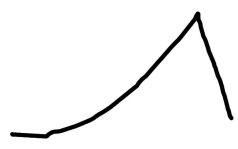
This is probably the basic plot shape that you were taught in college English and
applied to everything. In fact, it's far from the only plot shape in the world.". It
begins at a fairly static spot, has rising tension until the climactic moment and there
follows a denouement which can be very short or longer. It's not a bad description
of plot. I daresay it applies to at least 30% of all plots in novels and short stories
I've seen. It's probably the most common plot shape in English literature. It's just
not nearly the only plot shape and adhering to it slavishly will make it impossible
to tell all the stories you want to tell.
An example of this plot in literature would be the novel Ashfall by Mike Mullin. In
it, the main character lives through a supervolcano at Yellowstone. He survives,
but his family is away from home on vacation at a specific location he knows
about. He goes on a quest to find his family and every scene in the book moves
him literally closer to his family's location and thus leads to the climax of him
arriving home. There are not really any diversions in this. He knows what he wants
and every step of the journey leads him onward.
(Before I go on to other plot shapes, I must apologize for the crudeness of my
drawing skills. I've put off doing this article for a couple of years, only allowing
myself to do it on blackboards or whiteboards in classroom situations where I
knew my lack of skills would be erased soon after. But I've had numerous people
ask me to make a more permanent form and I decided that I would just go ahead
and do my best. This is it, my best as an artist.)
The basic plot shape above has a number of variations. The most common one that
I've seen taught is this:
#2
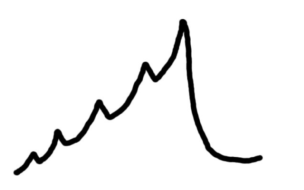
The little bumps are moments of minor climax on the way to the larger climax, and
they have their own smaller denouements, which you might call "reaction"
moments or interludes or even rests. The key to this plot shape is that each smaller
climax is related to the larger climax and leads to it.
An example of this plot in literature would be The Hunger Games. There are small
climaxes as Katniss defeats each antagonist along the way, and then she has
moments of rest to recover and then plan for her next moment. The final climax is
the defeat of the last enemies, not only in the games, but the people who are trying
to manipulate her outside of the games. She gains control over the games
themselves by playing on the sympathy of the crowd to enable her to save Peeta's
life and her own at once.
Another variation (#3) on this plot type is this one, which has multiple climaxes at
the end, and then goes to a denouement. An example of this would be a book like
The Queen of Attolia, where there is a romance climax followed directly by a war
climax followed by a mythic climax with the gods. Any number of climaxes can
probably be written in here, but these climaxes are all at a fever pitch of intensity,
and all happen to the same protagonist or group of protagonists one after another.
The great thing for the reader is that you can savor each climax on a separate level,
and therefore don't feel overwhelmed by too many climaxes together, which can
happen if you have a lot of explosions going on, each one larger than the one
before. Like a fireworks show that happens all in the same ten seconds, this leads
the reader feeling disappointed.
#3
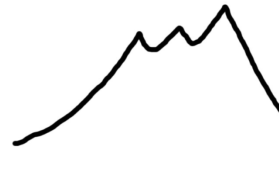
Next is 4. This plot in which multiple story threads are all rising in tension and
moving toward the same climactic moment. I call this the "Runelords" plot after
the series by the same name by David Farland, where he expertly works to have a
single scene resolve multiple plot threads told by multiple characters at the same
time. This has an interesting effect on the reader of making the final climactic
scene mind-blowing. It is tricky, however. If you can't write a mind-blowing final
scene, you might be better off as a writer avoiding this plot shape.
#4
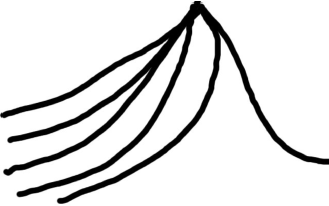
Again, 5 is a variation on the basic plot which I call plot in two parts. There are
two variations on this variation. A is a distraction beginning in which the first part
of the plot has little or nothing to do with the rest of the plot. It is simply a device
to get the reader into the story and understanding the character. Depending on how
well you work your writer magic, this may end with the reader feeling cheated or
simply interested to read on. Variation B is where the beginning is actually the
opening battle of the larger plot. Scott Lynch's The Lies of Locke Lamora works
this way, as does Lois McMaster Bujold's The Warrior's Apprentice. The first
part can feel like a short story, and can even be sold as one. This is an advantage to
you as the writer, because it gives you multiple income streams. The difficulty here
is that you have to skimp on backstory until the first smaller climax is over, and the
middle section can leave readers feeling bored.
#5
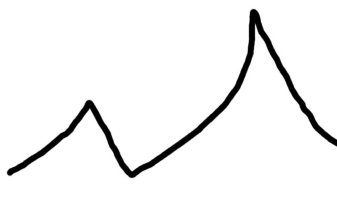
6 is what I call the villain/hero plot. If you think Star Wars, you have the right
idea. The original series looked mostly like a standard plot shape. The new series
looked like a tragedy. But seen together, there is a meeting point where the villain
has fallen and the hero is just beginning to rise. This kind of story can be told in a
variety of ways, the most obvious of which is chronological. But that is probably
the least effective. Far more interesting is to begin with the hero's story, as Lucas
does, and add the villain's story in later, either in bits and pieces which the
audience pieces together or in a completely separate section where the villain gets
to tell his own story.
#6
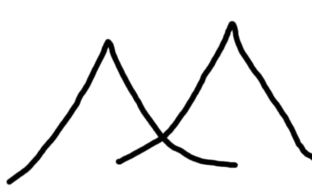
7 is what I call a dual plot shape. The example I use for this is the movie/book
Holes by Louis Sachar. Two related stories are being told in alternating chapters,
one in one time line and one in the other time line. There are different protagonists
for both stories, but the climax of the one leads to the climax of the other. Key
pieces of information about the front story can be found by reading the back story,
and neither story is really complete alone.
#7
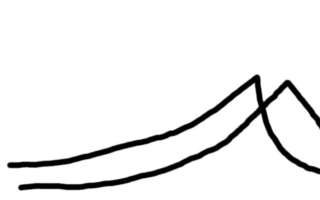
8 is the "end as beginning" plot, which is the plot of almost every first book in a
trilogy ever written. A small part of the larger problem is solved, but really the
ending point is just the beginning point for the larger story. I've heard lots of
writers talk about trilogies as two books rather than three. The first book is the set
up and the other two books are one long book cut in half (which is part of the
reason that the second book in most trilogies tends to drag a bit, and to feel
unfinished since it ends just when things are at the bleakest.) This plot can feel
dissatisfying to readers because they start the book with the expectation that things
will be solved, and end up realizing they have to commit to multiple other books in
order to get the resolution desired. As a writer, it can work well to give at least a
hint at a smaller resolution to offer as a bone to the reader.
#8
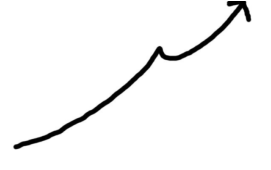
9 is what I call the "Memento" plot after the intriguing movie of the same name.
The idea here is that the story is told with the climax first and each subsequent
chapter moves back in time point by point, leading to the final beginning which
can feel like an ending if it is revelatory enough. Tricky plot structure which I do
not recommend for beginners. A lot of literary fiction tries to do this, by
withholding information from the reader which would make the rest of the story
make sense. I'm not sure I like this kind of storytelling. The reason I think
"Memento" works is because the protagonist actually has a memory disorder.
Otherwise it feels like a trick. You can, however, tell the parts of your story in any
way you wish. You can make up a reason to tell them in that order, like a character
in a bar remembering bits and pieces while drunk, or you can just do it the way you
want. You don't have to explain to the reader what you are doing. If it works, it
works. Just be sure that it really works.
#9
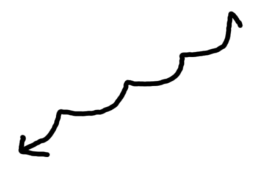
10 is what I call the flashback plot. Instead of there being smaller climaxes that
lead to the larger climax, the story is told such that there are frequent flashbacks to
explain the forward motion of the protagonist. This can be annoying, but it can be
beautiful, as well. A protagonist with a difficult family history or with mental
problems is the best choice here.
#10
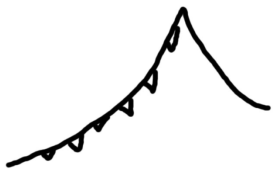
11 is what I call the "Scott Pilgrim" plot, but it could probably work for almost any
comic. In Scott Pilgrim, the hero has to defeat his beloved's seven evil ex-boyfriends in order to claim her. Each of the ex-boyfriends arrives and he has to
defeat each in a different, inventive way. The idea is that there are multiple
adventures that are all interesting. One may work as a capping moment over the
others, but they all work in and of themselves. There are also authors who write
short stories that can be layered into novels that are plotted this way, sometimes
with a different protagonist in each case.
#11
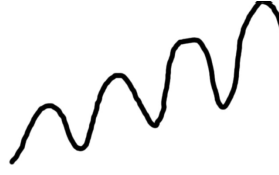
#12
This is what I call the parallax plot, where two stories are being told at the same
time. The same events happen in each story but mean completely different things.
Ender's Shadow/Ender's Game is an example of this in the form of two novels, but
there are certainly plenty of novels that tell the same story from alternating points
of view. Blink and Caution by Tim Wynne-Jones, for instance. The degree of
difference in the way the story is told from each pov varies from writer to writer.
You can have the effect of making the reader feel very twisted mentally by making
the two povs very different, or you can simply show two different but not
necessarily exclusive worldviews. In these stories, again, mostly the events are the
same. The beginnings and the endings will be very different because of the two
different povs.
#12
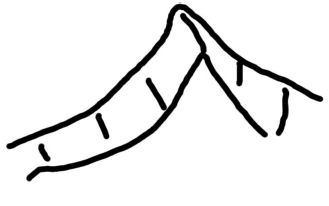
#13 is what I call the standard mystery plot, which begins with a death. All the rest
of the novel is trying to put the pieces back together which led to the death. The
television show Monk always shows the villain completing the deed, so there is
absolutely no suspense in the Who-Dunnit department. It's more about why and
figuring out how Monk will find out. But detective stories vary in the suspense
about the killer, revealing it often much later. Still, the fact of the death is always
the first part of the story and in some sense, the climax of the whole novel, told
first and out of order. We have become so used to this out of order telling that we
hardly notice it anymore.
#13
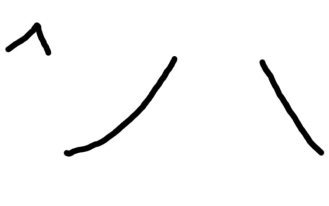
#14 I call the tragedy plot. Hamlet and Romeo and Juliet both work this way. Each
scene leads closer and closer to the inexorably bad ending. We all know what is
going to happen. Romeo and Juliet begins with the chorus telling us, and in a
revenge plot, we all know that it's not going to go well. But the interest for the
audience lies in exactly each scene that leads to the end, in the motivations of the
protagonist and the missteps that lead almost to the right ending. We watch with
bated breath, hoping for a different outcome, yet always knowing that the worst is
going to come.
There is no climax, no high moment, no resolution. There is only death.
Shakespeare does try in both cases to make the "morality" tale part of the story the
real high point. If the audience learns something through catharsis, then the real
story is what happens in the theater, and there is a happy climax and a denouement
as we go out of the theater and go on with our lives, made better by what we've
seen happen there. We don't want to repeat it. But in a sense, that goes beyond the
fourth wall of theater and is outside the scope of the story. The plot of a tragedy is
in many ways the exact opposite of the standard plot. I admit, in America we don't
have much taste for tragedies anymore, even if they're about villains.
#14
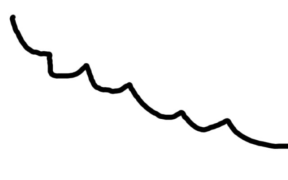
#15 This is an episodic plot which was very typical for TV comedy for many years
when I was growing up. More and more TV comedies tend to go beyond the
episodic plot, but Gilligan's Island is classic in that nothing ever changes. Sponge
Bob is the same way. No matter what disaster strikes at the end of the last episode,
the next episode starts in exactly the same place, as if the previous episode had
never happened. This makes it great for reruns. You don't have to watch shows in
any order in particular. Encyclopedia Brown worked this way in reading, and the
old Poirot and other Agatha Christie mysteries worked this way. The advantage is
that there is no reason to have to read the books in order. The disadvantage is that it
is difficult to have character development.
#15
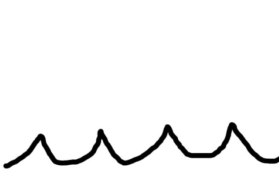
#16 This is what most modern sitcoms are, with an overarching plot in addition to
the episodic one. That is, there is always a certain resolution to the plot of the day,
but there are larger character arcs that are only given in bits and pieces and which
you will only see resolved if you watch the entire season in the proper order.
#16
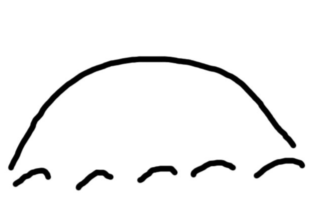
#17 I'm moving pretty far afield from the standard plot shape now. This is what I
call the splintering and reintegration plot. Some detective stories are like this, with
the detective going around and collecting various versions of the events from
different people involved. But the best recent example that really changed the way
I thought about plot was from Lost, especially the first season. While there was a
forward moving plot, it was slow. The more interesting plot of most of the episodes
was the character development told in flashbacks which helped inform the forward
moving plot. It was up to the audience to do the work of putting these pieces
together. In a sense, then, we were made into the detectives of this mystery plot.
#17
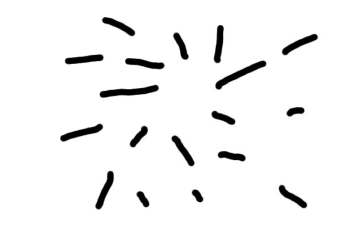
#18 I've drawn this with a rising plot action, but it doesn't have to work that way.
Each story could have equally gripping plot or equally lackadaisical plots. The
characters can be strongly related to each other, family members, for instance.
They can also be complete strangers who only happen to meet once during the
course of the plot. The movie Love, Actually works this way in my opinion. Some
stories have climaxes at different moments. It doesn't matter. The audience simply
waits for the story to unfold as it will unfold, and waits to see how the stories are
interrelated. Superb storytelling required.
#18
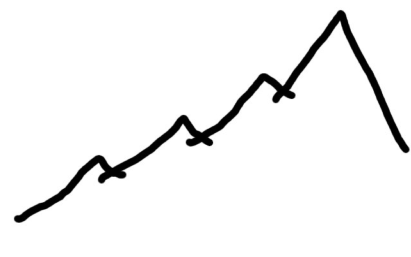
#19 I call this the twist plot. It is a bit of the tragedy plot combined with a standard
plot, although the standard plot tends to be quite shortened because of the tragedy
that comes before. Think of either Speaker for the Dead or White Cat by Holly
Black. Both have a twist in the middle that suddenly makes everything that has
gone before appear to be completely different. In fact, the story is really more
standard than it looks, since once the twist comes, you can look back and see how
the apparent tragedies were actually leading to the proper ending. But as you read,
it feels like you are going deeper and deeper into a pit from which you will never
emerge. This kind of plot has to be done cold-bloodedly, with lots of outlining or
thinking beforehand. No pantsing here. You've got to know every step and make
sure it can be read two ways equally well.
#19
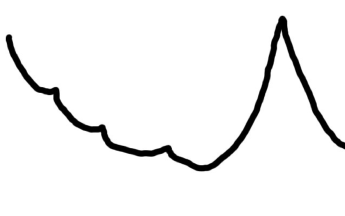
#20 The return plot is a standard plot that is used in picture books all the time. It
has less vogue for adult fiction and for novels, but if you look into the past, there
are plenty of novels in which the ending is simply a return to the beginning.
Goethe's Wilhelm Meister works this way. So does The Lord of the Rings. The idea
is that the world is out of joint. The hero must go out and set the world right. Then
the hero's reward is to return home and go back to living the life that he wanted to
live in the first place.
#20
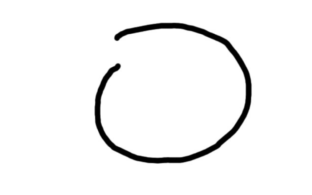
#21 Finally, the spiral plot is a variation on the return plot. I've drawn two pictures
of it here, one from above, and one from the side. The interesting thing about a
spiral plot is that the same characters and situations, the same problems, sometimes
even the same landscapes reappear again and again and the character shows his/her
development by solving the problem in a different way this time. Thomas
Covenant works this way, as does the uberplot of the Miles Vorkosigan books. The
fun thing about this kind of plot is that you get to show how much character
development you can make real. The tricky part is that you can make the reader
feel bored if you don't make the new variations on the theme seem interesting in
their own way.
#21
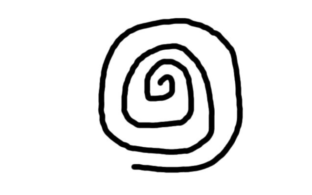
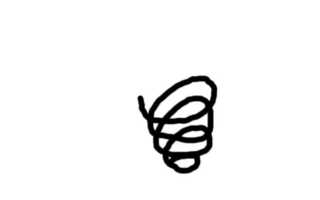
There are other plot shapes that I haven't covered here. One I find interesting is the
list plot shape. I've seen several novels in the YA world ordered as lists, though
sometimes they still tend to follow just a standard plot shape. The list could be
used on its own, however, and is in picture books. Alphabet and number books are
simply lists and they can be very satisfying as such. Another simple plot form is
repetition. No, David, is a book in which David is told no in each scene, in a
variety of circumstances. It's delightful. Riddles, wordplay, answer and reply --
all are valid story forms in picture books. Silly words made into poem for the sheer
pleasure of the sounds.
I am sure there are other forms I have not yet gotten to putting in my list. There are
also forms that I have a sense for, but which I am not sure quite how to draw a
picture for or even describe. But hopefully this is a good beginning. Good luck! Go
forth and plot!
Read more by Mette Ivie Harrison